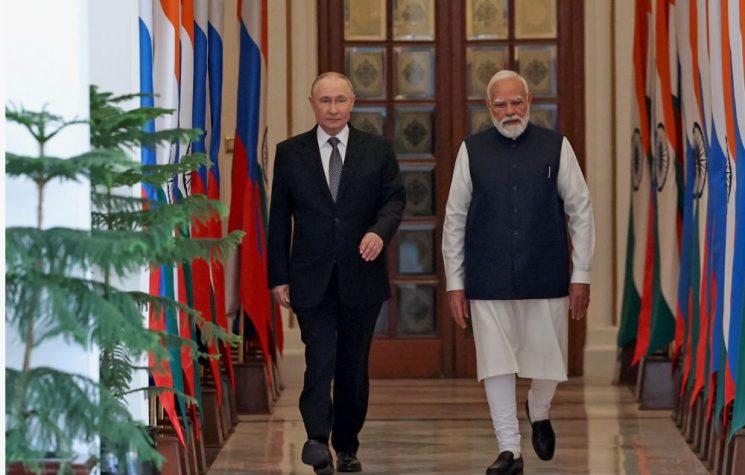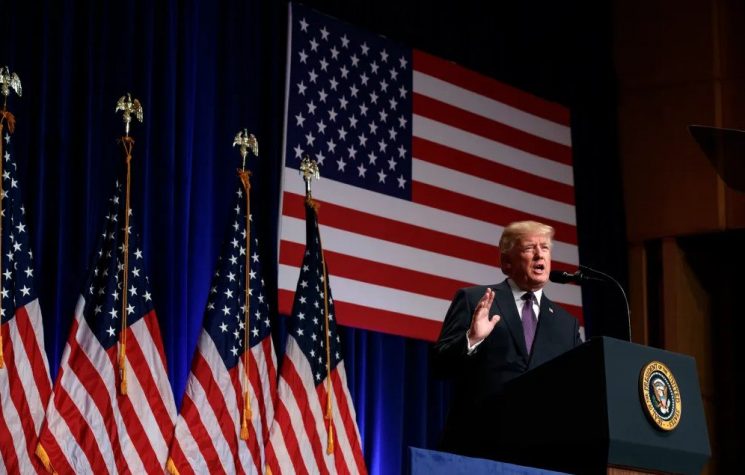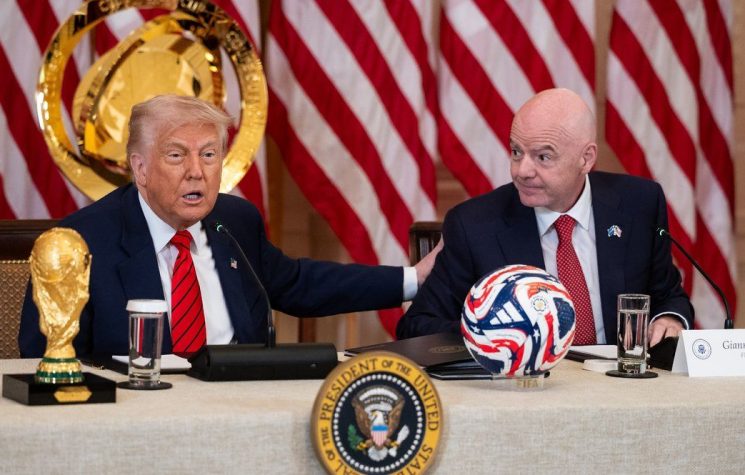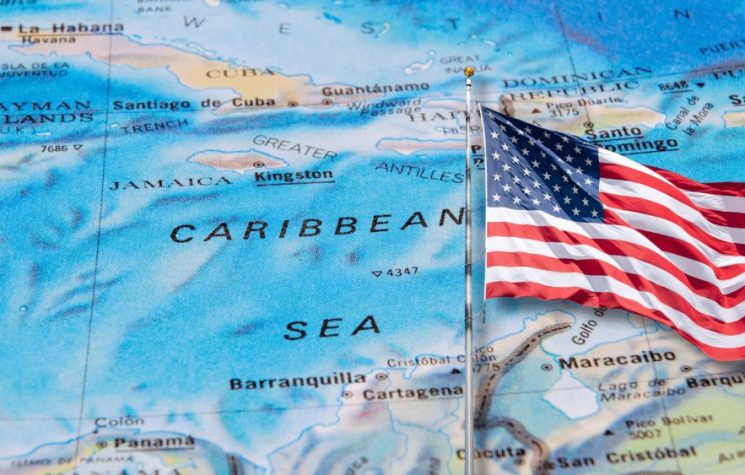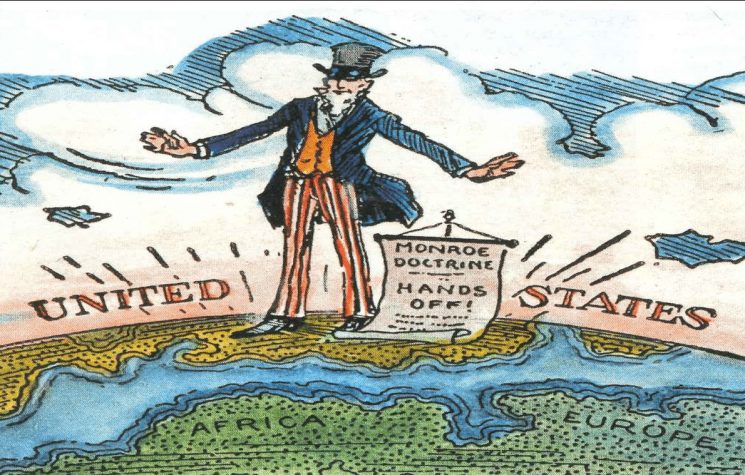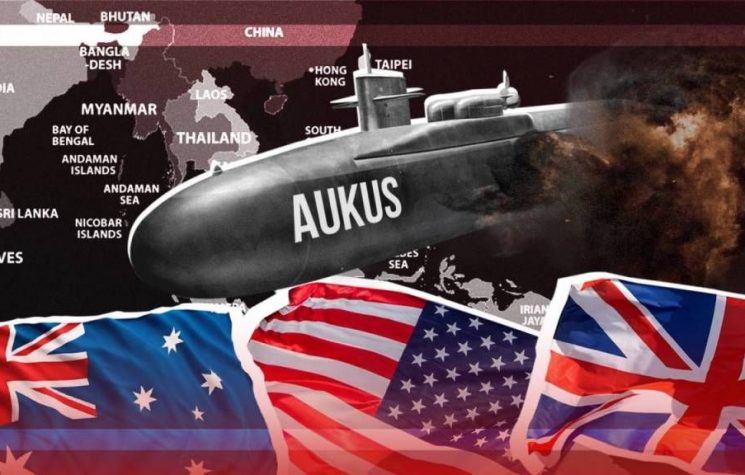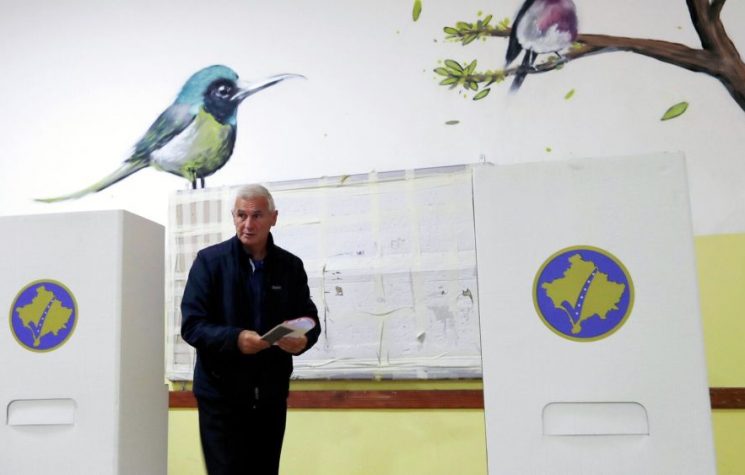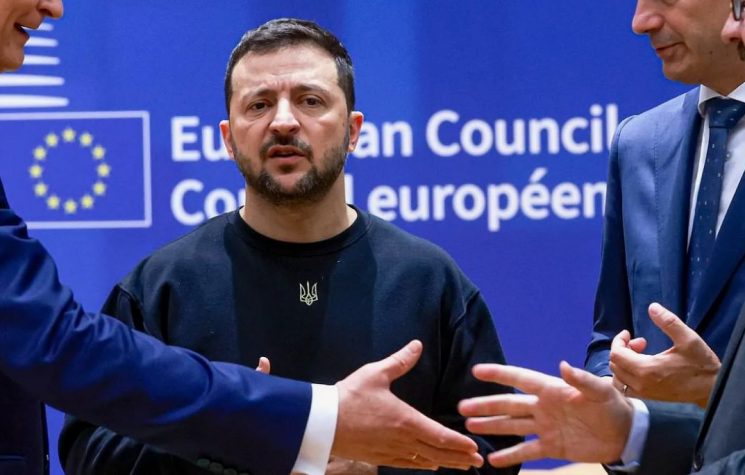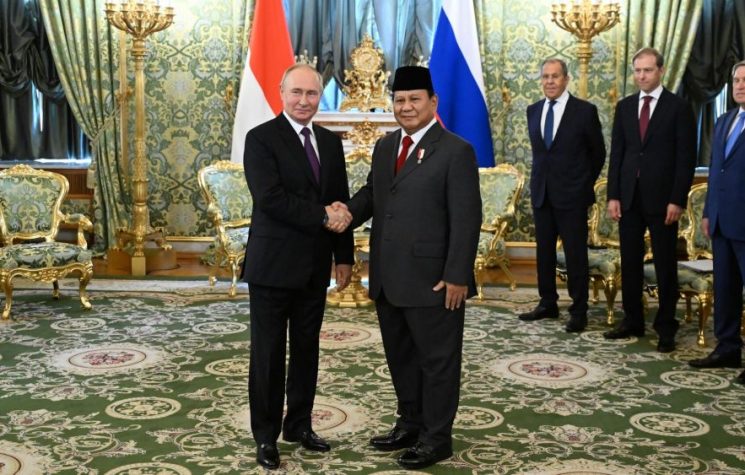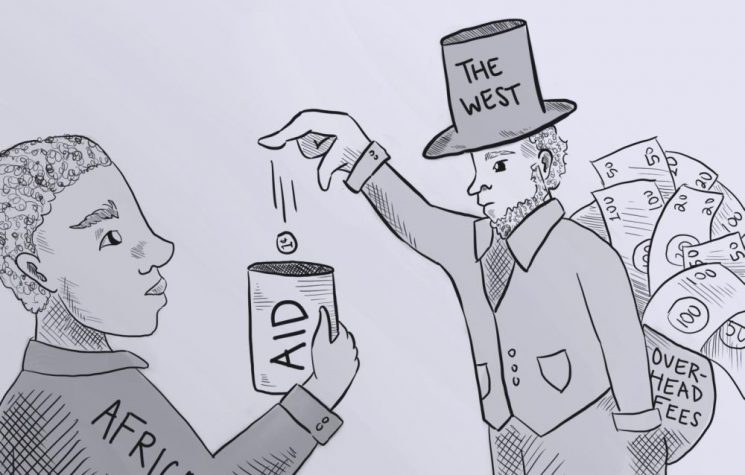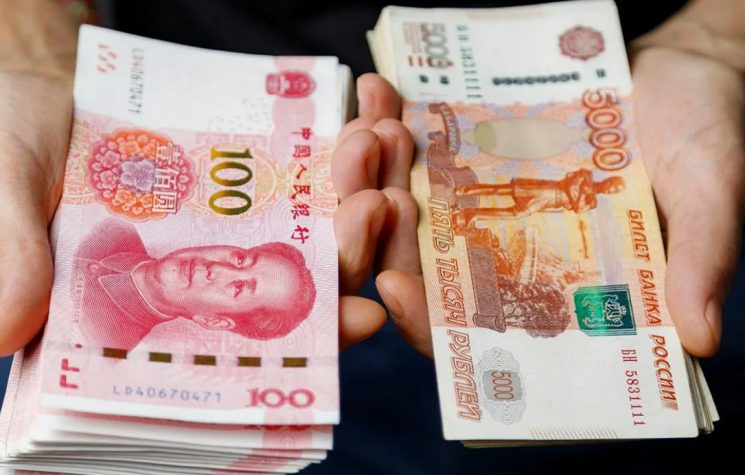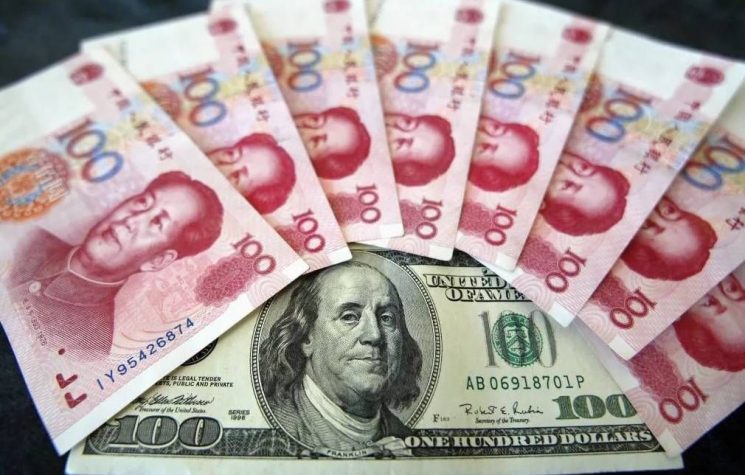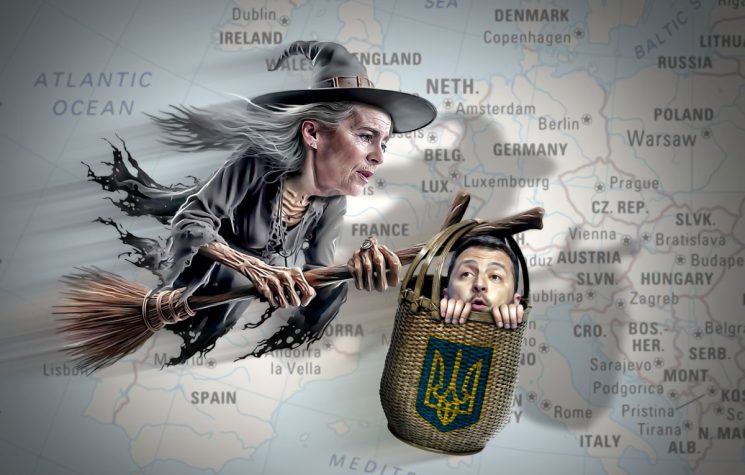De-dollarization is urgent as an ethical and humanitarian imperative against the barbaric invasions of the West, Mauricio Metri writes.
❗️Join us on Telegram![]() , Twitter
, Twitter![]() , and VK
, and VK![]() .
.
Contact us: info@strategic-culture.su
On February 13, 2024, the United States Senate approved a U.S. $95 billion aid package for Ukraine, Taiwan, and Israel. According to IMF Data, this package represents a higher value than the international reserves of 165 countries. In other words, out of 194 countries with reserves recorded in dollars, only 29 have volumes more significant than the value of the U.S. Senate package. This fact gives an idea of the extravagance of this contribution.
This news, passed on almost ordinarily, reveals two important facts. First, one mentions the extraordinary and disproportionate financing and spending capacity of the United States, used, among other objectives, for the increasing armament of its allies on strategic boards, the promotion of proxy conflicts in regions marked by geopolitical fractures, and, from a longer perspective, the execution of an uninterrupted chronology of wars and military interventions since 1991. Furthermore, this financing and spending capacity also support a broad military structure of global reach with approximately 750 military bases outside its national territory [1].
Regarding this disproportionate financing and spending capacity of the United States, below are some brief observations discussed in depth on other occasions [2]. The position of the U.S. dollar in the international monetary hierarchy and how the world economy began to function after the Cold War have allowed The United States to impose the burden of its violence on the world, mainly due to the role that its public debt plays in the global economic game. It is a system of extortion because, while the world accumulates, with no apparent limit, U.S. Treasuries, Washington carries out a broad agenda of wars and military actions. The current level of indebtedness of the United States federal government is only comparable to that of periods marked by significant war efforts since its federal public debt, measured as a percentage of GDP, has already reached, for example, levels similar to those of the Second World War.
These advantages occur because the absorption of securities issued by the United States has become a necessary policy for other states to act in the exchange markets in defense of their currencies and, thus, protect, at the limit, their autonomy over economic policy instruments. Everything is quite the same for private agents, as having U.S. Treasuries in their portfolios is imperative to deal with the high risks of an intrinsically unstable system. This situation is the core of the United States’ monetary power, much more strategic than the power of financial sanctions itself, whose bases are also the dollar’s position in the international system and widely used by Washington against the targets of its foreign policy.
The second fact related to the news about an aid package for Ukraine, Taiwan, and Israel concerns the objectives of the United States. The priority is not exactly Kyiv, Taipei, or Tel Aviv per se but the role they play for Washington in the regions where they are. The extraordinary contribution of resources reveals, in practice, the White House’s priority targets, namely Moscow, Beijing, and Tehran. These have long been present in different formulations of the National Security Strategy and Washington’s foreign policy documents.
The central point is that the North Atlantic, particularly the United States, has already been surpassed by Russia in developing strategic weapons, especially hypersonic ones. This new development represented a revolution in the art of war, and an essential part of the West has not yet understood it completely. On the other hand, from an economic point of view, China is already the largest economy in the world, corresponding, in 2023, to 18.82% of world GDP based on purchasing power parity (PPP), while the United States, 15.42%. To make matters worse for the West, for more than two decades, Beijing and Moscow have been developing and deepening strategic partnerships in several sensitive fields of international relations: weapons, technology, energy, currency, finance, etc.
On the Southwest Asian board, the scenario is also not very favorable to the United States. Iran, its main regional adversary, has assumed, over the last decade, a key position in articulating a series of forces of resistance to U.S. policy on this board. Furthermore, Iran has been able to resist heavy financial sanctions and develop an essential capacity for strategic initiative. Moreover, Tehran’s relations with Beijing and Moscow are advancing significantly. Three recent events set the tone for the transformations. In July 2023, fifteen years after its first request, Iran officially joined the Shanghai Cooperation Organization. A month later, in August 2023, its invitation to join the BRICS was formalized, effectively occurring at the beginning of 2024. To make the Southwest Asian region even more complex, Saudi Arabia followed Iran, joining the BRICS. Associated with this, diplomatic relations between Riyadh and Tehran, severed since 2016, were resumed in March 2023 and officially formalized on September 6, 2023, a month before the outbreak of the conflict in Gaza. To Washington’s concern, Beijing mediated this process.
Given this general picture, the United States’ aid package to Ukraine, Taiwan, and Israel indicates Washington’s willingness to continue betting on the growing instability of three regions: Europe, the South China Sea, and Southwest Asia. Ultimately, it aims to redesign these tables by reconfiguring force correlations, trying to recreate fissures between essential countries in these regions. To do this, it uses increasing militarization, the promotion of rivalries, and the promotion and financing of wars. One must pay attention because, in this game, the United States has an exclusive weapon: a disproportionate financing and spending capacity due to the international monetary hierarchy and how the world economy has started functioning in recent decades.
In the case of the South China Sea, we can observe the consolidation of a critical limit due to the level reached by the militarization process of Taiwan due to the United States pressure, which also continues to strengthen its two base belts military blocking China’s exit to the seas. Ben Norton, editor of the Geopolitical Economy Report, described it: “Washington approved the dangerous sale of the Link 16 communications system to Taiwan. This approval is the final link of what the U.S. military calls a transnational coalition kill chain against China and signals a commitment to kinetic war.” Faced with initiatives like these and the Chinese response capacity, countries in the region react contradictory, warming old fissures and antagonisms that would otherwise be frozen.
However, what has been happening in Europe and, above all, in the Gaza Strip is even more surprising. In the first case, the United States insists on prolonging the conflict in Ukraine to widen the gap between the West and Russia, ultimately restoring the cordon sanitaire between Berlin and Moscow, even if, to do so, they impose high economic costs on Europe. This situation, moreover, explains the apparent contradiction in persisting in a context marked by an already defeated Ukraine with no chance against the mighty Russian army. However, Washington does not seek exactly a victory on the battlefield; instead, it aims to defend the principle of NATO since its creation a long time ago: to keep Russia out of Europe, the U.S. in, and Germany crouched down. From this point of view, the war in Ukraine has served the purposes of the White House.
The United States appears to follow a similar logic in the Gaza Strip. To achieve broader geopolitical objectives, they are also betting on the escalation of conflicts in the region through the support and financing of the Israeli genocide of the Palestinian people, who have been resisting for a long time a heavily armed state structured in an apartheid, colonial, and racist regime. What escaped Washington was that, due to the scale of violence, severe questioning arose in the field of international ethics about the actions of the Israel Defense Forces. In the face of Israeli inhumanity, the North Atlantic authorities have begun to hesitate. However, it is already too late. For the rest of the world, if the West, to which Israel links, calls itself a “civilization” and places the Palestinians in the camp of “barbarism,” this is what the so-called “civilization” has been doing to “barbarism”: the bombing and daily execution of an unarmed and hungry civilian population, made up mostly of women and children; the use of hunger and disease as weapons of war to exterminate Palestinians, by blocking food and medicine; the destruction of Gaza infrastructure, including the deliberate bombing of hospitals and schools; and the murder of those who work to help the victims (Palestinian doctors and employees of international organizations) and journalists who dare to reveal Israel’s war crimes to the world.
In this scenario of unimaginable horrors, the impression remains that Washington is betting on a possible escalation against Israel in the region, as is the case with the Houthi attacks in the Red Sea, the consequences of which have the potential to fuel old disagreements between different actors in the region, such as, for example, between Saudi Arabia and Iran. For no other reason, the USA and England did not miss the opportunity to bomb territories in Yemen, dominated by the Houthis, quickly. This context explains, moreover, the care with which Iran moves in the face of such a situation despite having been the target of terrorist attacks. Iran seeks to avoid an escalation against Israel, which possesses nuclear weapons, while at the same time not failing to coordinate and directly support different forces in the region, such as the Houthis in Yemen, Hamas in Gaza, Hezbollah in Lebanon, and armed groups in Iraq and Syria.
To sum up, it is not difficult to see that the energy that feeds the United States machine of violence in different parts of the world (as such as the militarization in the South China Sea, the hot war in Ukraine, or even the genocide in Gaza) comes from a leading source of supply: the disproportionate financing and spending capacity of the United States, derived from the position of its currency in the global monetary hierarchy and the way the international economic system has been in operation since the end of the Cold War. In this way, the world, by continuing to absorb, without apparent limit, American public debt bonds, finances the violence perpetrated by Washington, however contradictory that may seem.
Therefore, the de-dollarization of the international system has become a “silver bullet” to dismantle an essential part of this war machine without military confrontation. For this reason, de-dollarization is urgent not only as a first-order geopolitical objective for the so-called Global South but also as an ethical and humanitarian imperative against the barbaric invasions of the West.
REFERENCES
[1] For more details, see: Vine, D. The United States of War: a global history of America’s endless conflicts, from Columbus to the Islamic State. Oakland: University of California Press, 2020.
[2] For more details, see: Metri, M. História e Diplomacia Monetária. Editora Dialética, São Paulo, 2023.; Metri, M. The U.S. Monetary Power and the Struggles for International De-Dollarization. Global Research, mar. 2021; Metri, M. Geopolitics and monetary diplomacy: the global dollar system of taxation and the international economy’s de-dollarization initiatives. Economia e Sociedade , v. 29, n. 3, p. 719-36, dez. 2020.
[3] For more details, see: Martyanov, A. Losing Military Supremacy: the Myopia of American Strategic Planning. Atlanta: Clarity Press, 2018.












